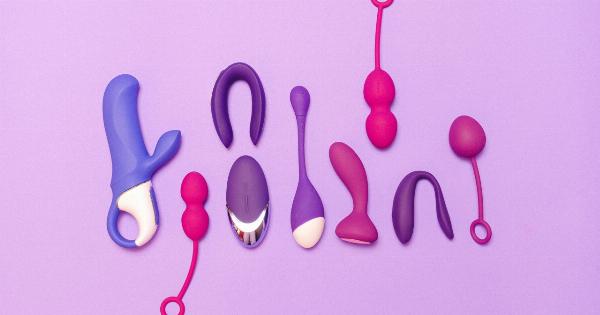When it comes to discussing orgasms, the focus is often on males, leaving female pleasure in the shadows. There is a lack of conversation surrounding female orgasms, leading to misinformation and confusion.
In this article, we will delve into the truth about female orgasms, debunk some common myths, and shed light on the complexities of female pleasure.
Understanding the Female Anatomy
Before diving into the world of female orgasms, it is essential to understand the female anatomy. The clitoris, often considered the powerhouse of female pleasure, is a small organ located at the top of the vulva.
It contains thousands of nerve endings and is solely dedicated to sexual pleasure.
Other vital parts of the female reproductive system include the vagina, the inner and outer labia, G-spot, and cervix. Each of these areas can contribute to a woman’s sexual experience and may play a role in achieving orgasm.
The Different Types of Female Orgasms
Contrary to popular belief, there isn’t just one type of orgasm for women. Multiple orgasmic experiences can vary in intensity, duration, and sensation. Let’s explore some of the different types:.
1. Clitoral Orgasm
The clitoris is highly sensitive and can be stimulated through direct or indirect contact. Many women find that clitoral stimulation is the key to reaching orgasm. This type of orgasm is often described as intense, localized, and euphoric.
2. Vaginal Orgasm
The elusive vaginal orgasm is often a topic of discussion. Some women report experiencing orgasm solely through penetration and stimulation of the vaginal canal.
This intense orgasm may stem from stimulation of the G-spot, a sensitive area located on the front wall of the vagina.
3. Combo Orgasm
For some women, the most intense orgasms happen when both the clitoris and vagina are simultaneously stimulated. This powerful combination can lead to explosive orgasms and deep satisfaction.
4. Full-Body Orgasm
A full-body orgasm is an experience that extends beyond genital pleasure. It encompasses the entire body, with waves of pleasure coursing through every nerve ending.
Achieving this type of orgasm often requires relaxation, exploration, and the absence of performance pressure.
The Importance of Communication
One of the crucial aspects of sexual pleasure is communication. Understanding the unique needs and desires of your partner can greatly enhance the sexual experience.
Open and honest discussions about preferences, boundaries, and fantasies create a safe space for exploration and mutual satisfaction.
Breaking the Stigma: Female Pleasure Matters
For years, female pleasure has been shrouded in secrecy and shame. Society’s patriarchal norms have minimized the importance of female orgasms, perpetuating the idea that male pleasure is the primary focus.
It is time to break the stigma and acknowledge that female pleasure matters.
By prioritizing female pleasure, individuals and couples can create a more fulfilling and equal sexual experience. Every woman is unique, and embracing this diversity is essential for fostering a healthy sexual relationship.
Debunking Common Myths
There are several myths surrounding female orgasms that need to be debunked. Let’s set the record straight:.
1. Myth: Every Woman Can Easily Orgasm
While some women can easily achieve orgasm, others may find it more challenging. The ability to reach orgasm varies from person to person and is influenced by a multitude of factors, including physical and mental well-being.
2. Myth: The Size of the Penis Determines Orgasmic Success
The belief that penis size directly correlates with orgasmic success is a pervasive myth. It is important to remember that clitoral stimulation plays a significant role in female pleasure, and penis size is not the determining factor for orgasm.
3. Myth: Orgasms Are Always Loud and Wild
Contrary to what is often portrayed in movies and media, orgasms can vary in intensity and expression. Some women may experience quiet orgasms, while others may have more vocal and visible reactions. There is no right or wrong way to experience pleasure.
4. Myth: Orgasms Are the Ultimate Goal
While orgasms can be incredibly pleasurable, they should not be seen as the ultimate goal of sexual intimacy. The journey, connection, and exploration of pleasure are equally significant.
Focusing solely on orgasm can create unnecessary pressure and potentially hinder enjoyment.
The Role of Sex Toys and Techniques
In the pursuit of sexual pleasure, individuals often turn to sex toys and various techniques to enhance their experiences. Experimenting with different sensations, positions, and toys can help discover new pathways to orgasm.
Sex toys designed specifically for clitoral or vaginal stimulation can intensify pleasure and awaken new sensations. From vibrators to dildos, there is a wide array of options available to cater to individual preferences.
Mind-Body Connection: Relaxation and Pleasure
The mind-body connection plays a crucial role in female pleasure. Achieving orgasm requires relaxation, comfort, and the absence of stress or distractions.
Prioritizing self-care, reducing stress levels, and setting the mood can greatly enhance the sexual experience.
Conclusion
Behind closed doors, the truth about female orgasms is slowly emerging. By understanding the complexities of female pleasure, debunking myths, and promoting open communication, we can create a more inclusive and satisfying sexual landscape.
Let’s celebrate the diversity of women’s experiences and prioritize their sacred pleasure.




























